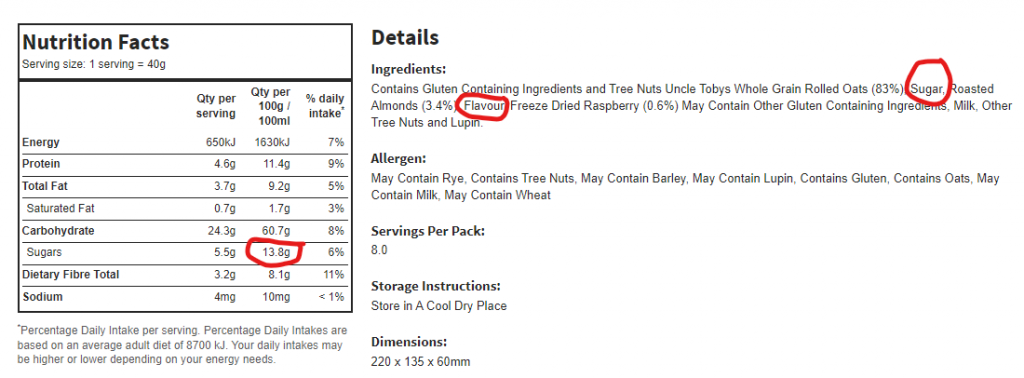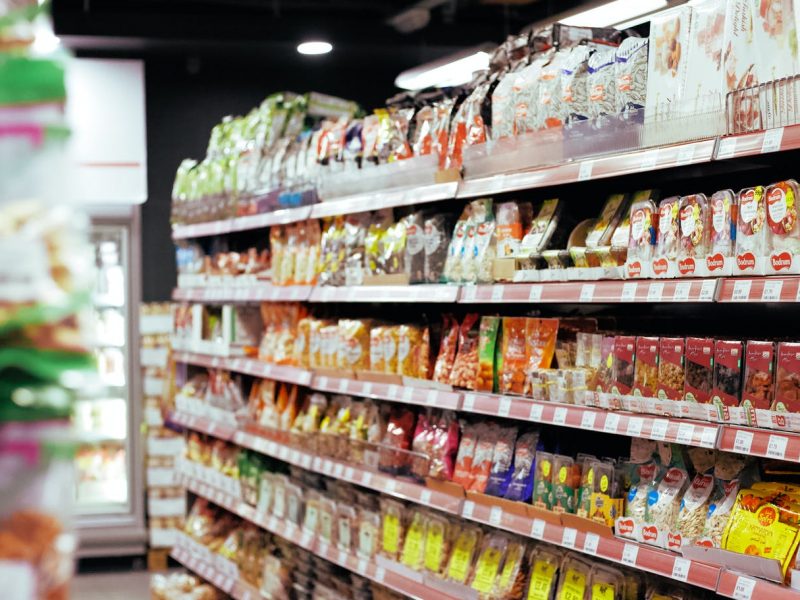If you have ever been confused by all of the different information on a food label? You’re not alone. But using a few little tricks, you can assess which foods are fine to consume regularly and which are best for a treat.
In a low histamine diet, whole foods recipes made at home are often best. But sometimes due to time, or when we are away from home, we need to buy something pre-made. Food manufacturers design their packages to appeal to you, not to tell you whether it’s actually healthy or not. But using these simple guidelines, you can make better food choices.
Skip the claims on the front
The people who design food packages will use the front to pull you in. You’ll often find health claims like gluten-free, organic, or no added sugar.
But often these claims can be deceiving. They might be based on the serving size, which is significantly smaller than how much the average person would eat. It might be to distract from the less healthy features – it might say organic but also be full of sugar, artificial sweeteners, or additives. Or if it claims to be high in a nutrient, that nutrient might not be naturally found in the food but is added during processing.
Instead of looking at the front of the package, head straight to the back for the facts.
Don’t eat anything your great-grandmother wouldn’t recognise as food.
Michael Pollan
Check the order of the ingredient list
An ingredient list will be listed in descending order. So the first ingredient is present in the greatest amount, and the last ingredient is present in the least amount.
Whenever possible, you want food labels to have whole foods as at least the top 2-3 ingredients. But you don’t want anything like sugar or syrup in those first few ingredients.
Figure out the percentage
Want an easy way to figure out the percentage of macronutrients? This is where the nutritional panel can come in handy.
Go to the per 100g or per 100ml column. This will tell you the percentage of each nutrient. So if it’s 30g of sugar per 100g, it’s 30% sugar! I suggest going for foods that contain 10% or less sugar in most cases.
For example in the image below, from a package of Quick packaged Oats with Raspberry Roasted Almond & Vanilla, you can see that Sugar is the second ingredient, and is 13.8% of the total serving! A better option is to cook whole oats and then add your own fruit and other toppings.

Minimise additives and numbers
The more processed a food is, the more likely it is to have multiple additives. Additives can include preservatives, sweeteners, colours, flavours, stabilisers, emulsifiers… the list goes on. Sometimes they will be listed as a chemical-sounding name such as polyglycerol esters (PGE) or polysorbates, and sometimes they will simply be a 3-digit number like 951 – aspartame.
Some additives are fairly harmless, so don’t panic over any food that has one or two additives. But it’s best to avoid the foods that have more additives than food ingredients you recognise!
You can check the Chemical Maze website and app for more info around the numbers on the back of the pack.
If in doubt, aim for 5 ingredients or less
An easy rule of thumb to apply for most foods is picking foods that have 5 or fewer ingredients. Foods that have dozens of ingredients are usually highly processed, making them less than ideal.
There are a few exceptions to the rule, but if you follow it at least 80% of the time, you’ll minimise your intake of additives and other nasties.
Knowing what is in food is only the first step. Knowing what’s right for your body is key. You can book a discovery call with me to help you with your histamine intolerance from a whole foods perspective or grab the 4-week low histamine meal plan program to get started cooking from scratch.

 What is the perfect low histamine diet?
What is the perfect low histamine diet?